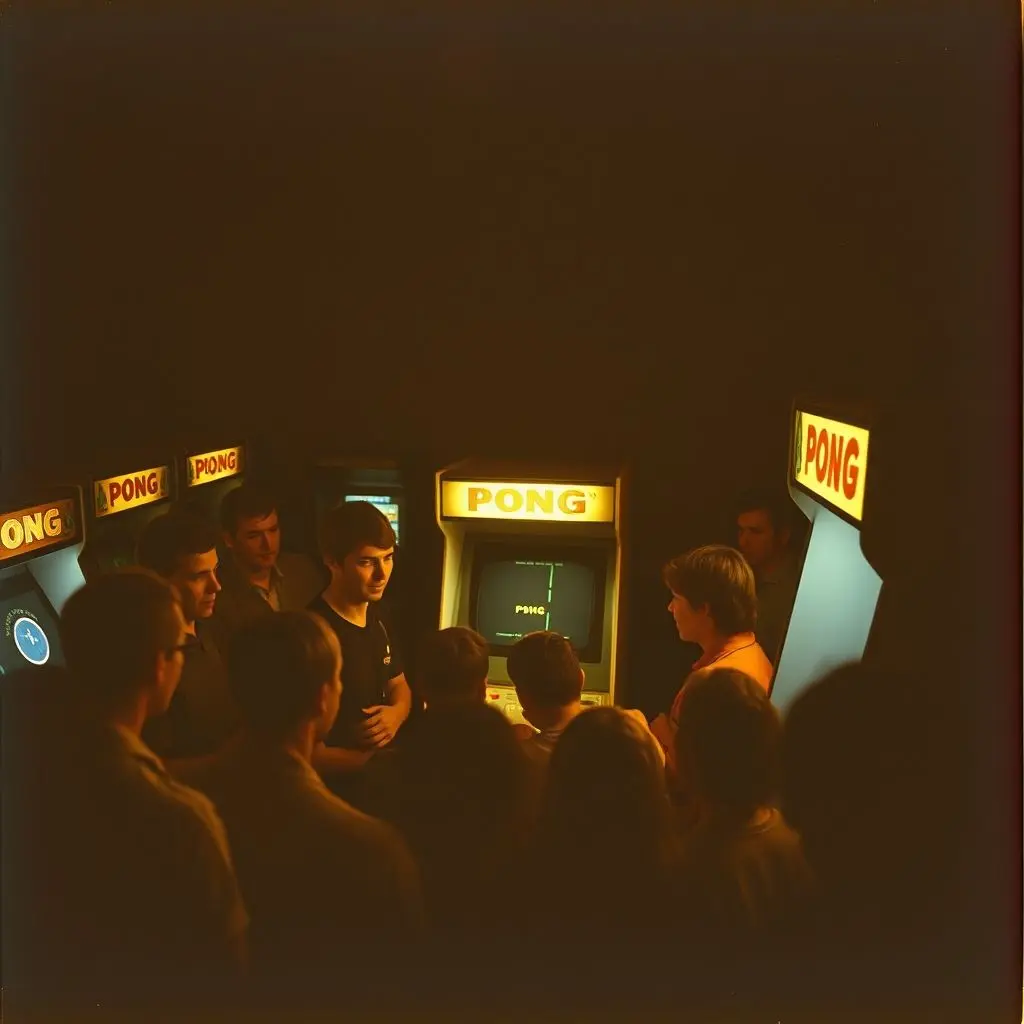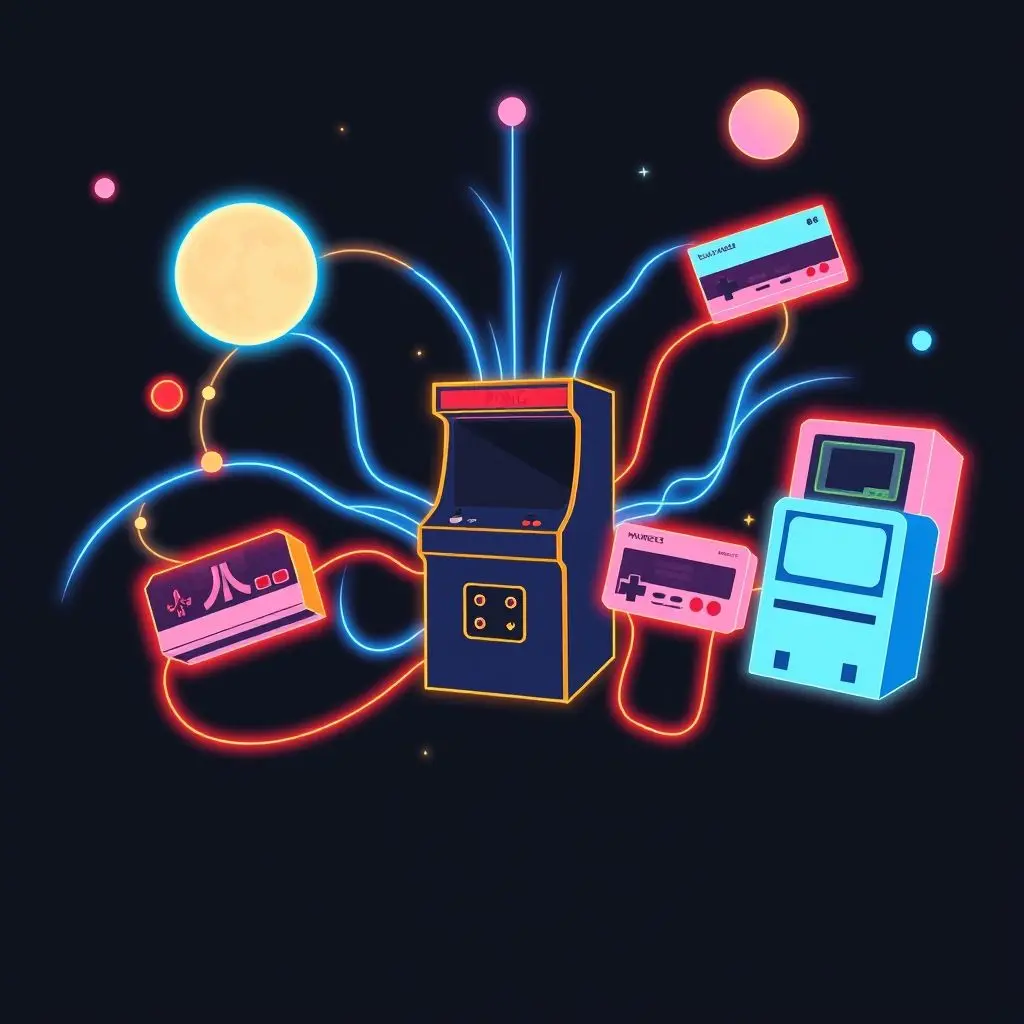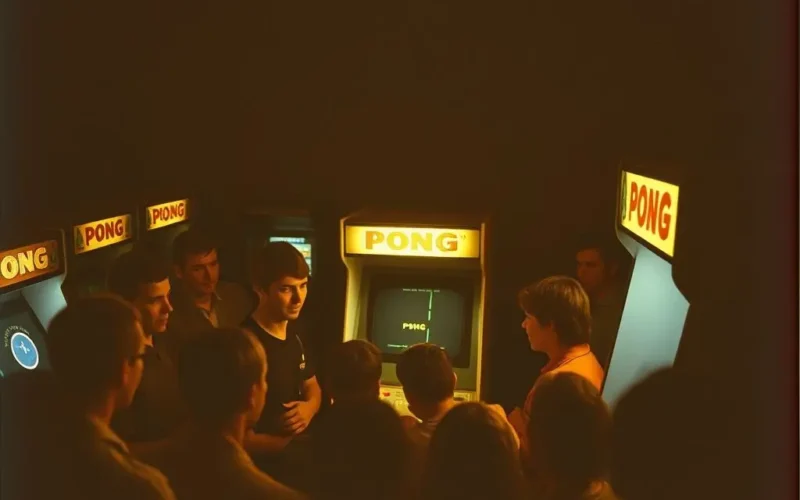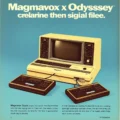Ever stopped to think about the very first digital interaction you experienced, or perhaps, the genesis of the multi-billion dollar video game industry? Many paths lead back to a seemingly simple game of virtual table tennis. It wasn’t just a primitive digital rendition of ping pong; Pong was the undeniable spark that didn’t just ignite an industry – it built an entirely new form of entertainment and a global business model.
Imagine the early 1970s. Entertainment meant television, movies, board games, perhaps pinball in an arcade. The idea of paying to play a game displayed on a screen was revolutionary, almost absurd, to many. Yet, with just a bouncing white dot and two paddles, Pong proved that people *would* open their wallets for interactive digital fun. It wasn’t merely Atari’s first major hit; it was the catalyst that fueled the burgeoning arcade scene and laid the crucial groundwork for every single game console, PC title, and mobile application you engage with today. It clearly demonstrated that interactive digital experiences weren’t just a novelty; they were the undeniable future.
To get a quick visual blast from the past and see this history in motion, check out this short:
From a simple digital gleam on a cathode ray tube, Pong wasn’t merely a game; it literally constructed a whole new dream for entertainment and technology.
Table of Contents
The World Before the Pixel Paddle
Before Pong dominated dimly lit arcade corners and living rooms, the concept of interactive digital entertainment was largely confined to research labs and academic institutions. Early experiments like Tennis for Two (1958) or Spacewar! (1962) existed, but they were curiosities running on massive, expensive computers, inaccessible to the general public. The commercial landscape for games was dominated by mechanical and electro-mechanical machines like pinball and crane games.
The idea of putting a computer game into a cabinet, coin-operated, and placing it where everyday people could find it was a significant leap. It required simplifying the technology, making it robust, and creating gameplay so intuitive anyone could pick it up instantly.

The Genesis: Atari and Allan Alcorn
The story of Pong is deeply intertwined with the founding of Atari in 1972 by Nolan Bushnell and Ted Dabney. Bushnell had prior experience with computer games, including a commercial version of Spacewar! called Computer Space, which was complex and failed to gain traction with the casual crowd. He understood the need for simplicity.
Bushnell hired Allan Alcorn as their first engineer and tasked him with creating a simple game for training purposes. He suggested a basic two-paddle, one-ball game, similar to the one on the Magnavox Odyssey, the first home video game console (though Bushnell famously claimed not to have seen the Odyssey’s version until later, a point of historical debate and legal challenge). Alcorn, using transistor-transistor logic (TTL) chips rather than a complex computer, designed a remarkably stable and functional prototype.
The first Pong machine was installed on a trial basis at Andy Capp’s Tavern in Sunnyvale, California. The story is legendary: within days, the machine broke down not because of a technical fault, but because the coin collector bin was overflowing! This was the first undeniable proof of concept – people *loved* playing this simple game, and they were willing to pay for it.

Why Pong Was a Game Changer
Pong’s success wasn’t a fluke. It hit the market at the right time with the right design, embodying several revolutionary concepts:
- Unparalleled Simplicity: Two paddles, a ball, one goal: don’t miss. Anyone, regardless of age or technical familiarity, could understand and play Pong within seconds. This accessibility was key to its mass appeal.
- Instant Interactive Gratification: Unlike passive forms of entertainment, Pong offered direct control and immediate feedback. Your actions directly influenced what happened on screen, creating an engaging, addictive loop.
- Proof of Commercial Viability: Pong unequivocally demonstrated that there was a massive, untapped market for interactive digital entertainment. People would queue up and insert coins for the experience. This was the critical validation the nascent industry needed.
- Fueling the Arcade Boom: The success of the Pong arcade cabinet led Atari to manufacture thousands more. Competitors quickly emerged, creating Pong clones (like Atari’s own Pong Doubles, and countless others such as Kee Games’ Tennis, Nutting Associates’ Pong). This explosion of similar games created the blueprint for the modern video arcade – a dedicated space for public video gaming.
- Paving the Way for Home Gaming: Seeing the arcade success, Atari developed Home Pong, released through Sears in 1975. This brought the video game experience directly into the living room, kickstarting the home console market and laying the groundwork for future giants like the Atari 2600, which would turn Atari into a household name.
- A New Economic Model: Pong established the coin-operated video game as a legitimate, highly profitable business model. Later, Home Pong proved the viability of selling dedicated home gaming hardware. These models would evolve but remain fundamental to the industry.

The Lasting Echo of a Bouncing Dot
Pong’s influence is impossible to overstate. It wasn’t the *first* video game, but it was undeniably the *first commercially successful and culturally significant* one. Its success provided the capital and inspiration for Atari and other companies to innovate further, leading to more complex arcade games like Space Invaders, Pac-Man, and eventually, the versatility of cartridge-based home consoles like the Atari 2600 (VCS).
Every subsequent leap in gaming technology – from 8-bit sprites to photorealistic 3D worlds, from joysticks to motion controls and touchscreens – owes a debt to the simple premise validated by Pong: people desire interactive digital experiences, and they will pay for compelling ones. The entire infrastructure of game development, distribution (from arcades to cartridges to digital downloads), and player culture can trace its roots back to that coin-operated cabinet in a California tavern.
The lessons learned from Pong – the importance of accessible design, immediate feedback, and understanding market desire – are still relevant to game developers today, whether they’re creating a blockbuster console title or a viral mobile app.

Frequently Asked Questions About Pong
Here are answers to some common questions about this pivotal game:
- Was Pong the very first video game? No, games like Tennis for Two and Spacewar! predate it, but they were not commercially available to the public in the same way. Pong was the first widespread, commercially successful arcade video game.
- Who created Pong? The concept was given by Nolan Bushnell, but the actual game circuitry and design for the arcade version were primarily done by Allan Alcorn at Atari.
- How successful was Pong? Extremely successful. The arcade version sold thousands of units, leading to massive profits for Atari. The Home Pong console sold hundreds of thousands through Sears, establishing a lucrative home market.
- Did Magnavox sue Atari over Pong? Yes. Magnavox, creators of the Odyssey console which had a similar tennis game, sued Atari for patent infringement. Atari settled, agreeing to pay licensing fees.
Looking Back at the Bouncing Dot
It’s easy to look at Pong through a modern lens and see only its primitive graphics and basic gameplay. But understanding its context reveals its true genius. In an era unfamiliar with digital interaction, Pong offered an intuitive, engaging experience that proved the viability of an entirely new form of entertainment. It didn’t just pave the way; it built the first road, laid the first brick, and showed the world that playing on a screen was not just possible, but incredibly fun and profitable. The next time you boot up your console, launch a PC game, or swipe through apps on your phone, remember the simple bouncing dot and two paddles that started it all. The pixelated dream that began with Pong continues to evolve, but its foundational legacy remains undeniable.





